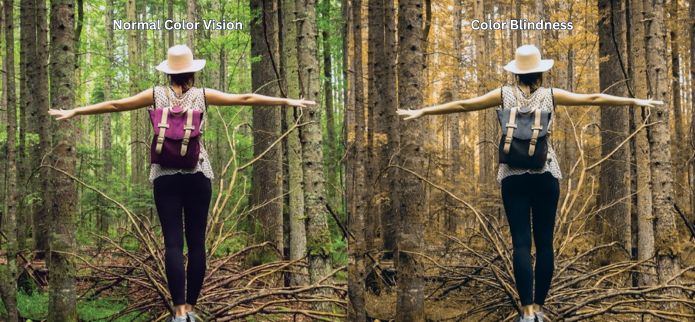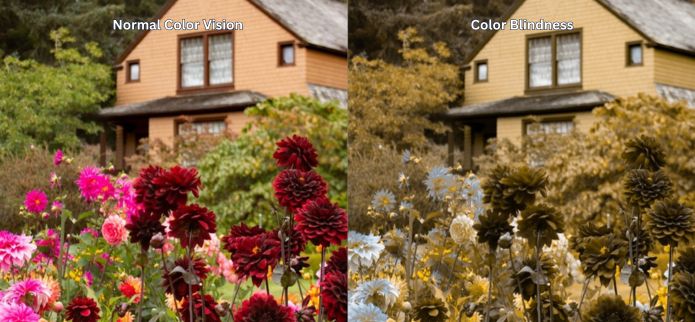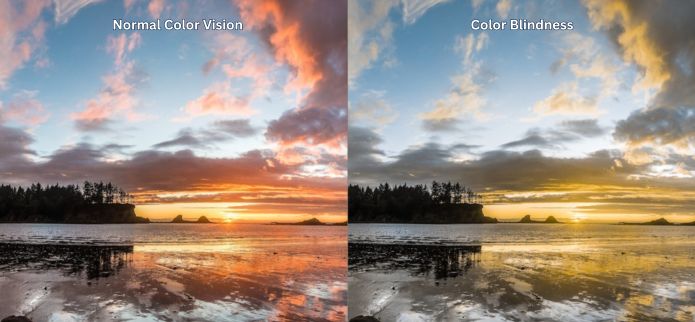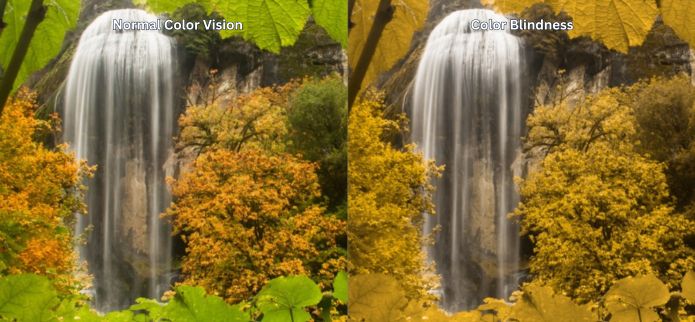Oregon’s Adventure Coast Announces Support for Color Blindness Awareness Month

The addition of the EnChroma glasses for color blindness reflects our mission to make the Oregon Coast accessible to all. - Janice Langlinais, Director of the Coos Bay-North Bend-Charleston Visitor & Convention Bureau, aka Oregon’s Adventure Coast.
Anywhere you look on Oregon’s Adventure Coast: Coos Bay, North Bend, and Charleston, you’ll likely find a kaleidoscope of color that many of us take for granted. Fiery red and orange sunsets over the Pacific, lush green forests, golden sunrises on the bay, and the dazzling gardens and holiday lights at Shore Acres State Park make the region come alive. Tidepools reveal entire ecosystems in brilliant hues, while local galleries showcase vibrant works of art.
For those who are color blind, however, the whole picture isn’t always easy to see.

That is why the Coos Bay–North Bend–Charleston Visitor & Convention Bureau (Oregon’s Adventure Coast) is partnering with EnChroma , creators of glasses for color blindness, to promote International Color Blindness Awareness Month this September. Oregon’s Adventure Coast now offers outdoor glasses for both the most common and rarer forms of color blindness, with options for adults and children, free to borrow for up to seven days. Additionally, Coos Art Museum ,Coos History Museum , and the Charleston Marine Life Center have indoor EnChroma glasses available for visitors to borrow free of charge during their visit to the museums.
“The addition of the EnChroma glasses for color blindness reflects our mission to make the Oregon Coast accessible to all,” said Janice Langlinais, Executive Director of the Coos Bay-North Bend-Charleston Visitor & Convention Bureau, aka Oregon’s Adventure Coast. “From ‘Accessibility Verified’ businesses with Wheel the World, to David’s Chair mobility devices and accessible kayak launches, we’re creating a destination where everyone feels welcome and empowered to explore.”
To highlight how Color Vision Deficiency (CVD) can affect visitors and limit their ability to fully experience the vibrant colors on Oregon’s Adventure Coast, we used EnChroma’s Chromatic Vision Simulator to illustrate the difference between normal color vision and CVD.



Enter to Win a FREE Pair of EnChroma® Color Blind Glasses!
In recognition of International Color Blindness Awareness Month, Oregon’s Adventure Coast is proud to partner with EnChroma® to offer a special giveaway designed to help raise awareness about Color Vision Deficiency (CVD).
From now through October 15, 2025, color-blind visitors are invited to stop by the Coos Bay Visitor Center (located at 50 Central Avenue in Coos Bay, OR) to take the color-blindness test , try EnChroma glasses, experience the difference for themselves, and enter to win one of two free pairs of EnChroma outdoor glasses.
How to Enter: You can enter online or in person at the Coos Bay Visitor Center.
Simply take the color-blindness test , try on a pair of glasses (not required for online entries), complete a short form selecting either kid or adult glasses, the type of glasses (either Deutan or Protan, regular or fit-over), and you’ll be entered into the drawing.
Entry to the contest may also be completed online , but still requires the color-blindness test to ensure the need and the correct type of color-blindness glasses.
Winners will be selected at random and announced by October 30, 2025. Each winner will receive a complimentary pair of EnChroma outdoor glasses, shipped directly from EnChroma.
Winners must not require prescription lenses, though contact lens wearers and those who only need reading or driving glasses are eligible. To verify eligibility, participants must take EnChroma’s color blindness test, which cannot be intentionally manipulated. When entering, you agree to the Official Rules listed at the bottom of this post. Additional terms and conditions may apply.

About Color Vision Deficiency
Color Vision Deficiency (CVD, or “color blindness”) affects one in 12 men (8%) and one in 200 women (.5%) – an estimated 13 million in the US, 30 million in Europe, and 350 million worldwide. While people with normal color vision see over one million shades of color, the color blind only see an estimated 10% of hues and shades. To them, green and yellow, gray and pink, purple and blue, and red and brown appear similar, with colors looking muted, dull, and blending together. This can cause challenges in daily life, frustrate color blind students when doing schoolwork that contains colors, and make visits to colorful attractions like museums, parks, gardens, and other destinations less enjoyable.
The inspiration for International Color Blindness Awareness Month is the birthdate of John Dalton, a renowned English scientist recognized for his research on color blindness. Dalton, who was himself afflicted with CVD, was born on September 6, 1766.
“Awareness of how common color blindness is, and how deeply it impacts daily life, remains surprisingly low among employers, educators, parents, and the public,” said Chris Dykes, CEO of EnChroma. “Whether it’s navigating color-coded tasks at work, learning in school, playing sports, or enjoying the outdoors, color confusion can create real challenges for those with CVD. This year, we invite more organizations to join us in supporting International Color Blindness Awareness Month—to educate, advocate, and help build a more inclusive world for the color blind.”
Accessibility for the Color Blind
EnChroma is the leading advocate for ‘color accessibility,’ helping more than 400 universities, K-12 schools, state and national parks, libraries, museums, tourism departments, attractions, and other organizations purchase and loan EnChroma glasses to color-blind students and guests. EnChroma donates a pair of glasses for each pair an organization buys to lend to the public or students. The program is also open to employers. Scenic viewers adapted for the color blind are also available and in use by park systems across more than 25 states.
EnChroma glasses are engineered with special optical filters that help the red-green color blind experience an expanded range of colors more vibrantly and distinctly to make schoolwork that involves color, art, nature, and other experiences more ‘color accessible.’ The glasses do not deliver full-color vision, and results and reaction times vary. EnChroma glasses enhance color for approximately 80% of people with deuteranomalous or protanomalous red-green color blindness who have all three of their color-sensing cones.
Related Reading
- Proud Sponsors of Progress: Accessible Oregon Coast Film Tour
- Oregon’s Adventure Coast Boosts Accessibility for Outdoor Recreation
More Resources:
- How EnChroma Glasses Work
- What is Color Blindness
- EnChroma Explained, Video
- Coos Bay Accessibility Insights: Where to Stay and What to Do
- Accessible Southern Oregon Coast Travel
- Travelability on the Oregon Coast
- Best Wheelchair Friendly Trails in Coos Bay
- Coos Bay Accessibility Insights: Top 5 Accessible Restaurants
- Accessible Adventures to the Oregon Dunes and Beyond
